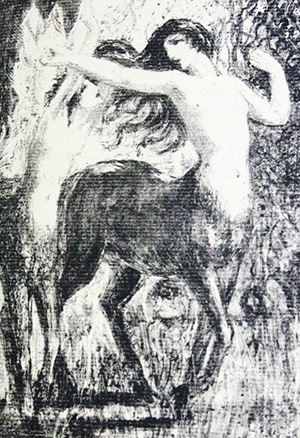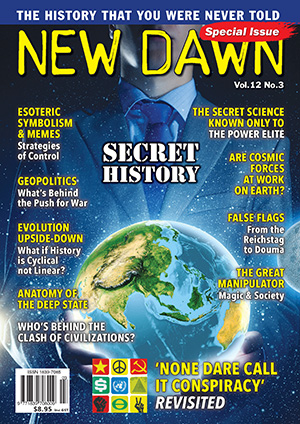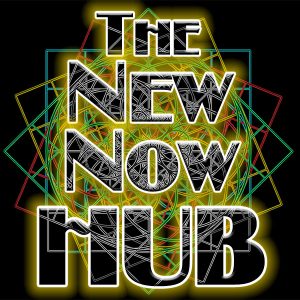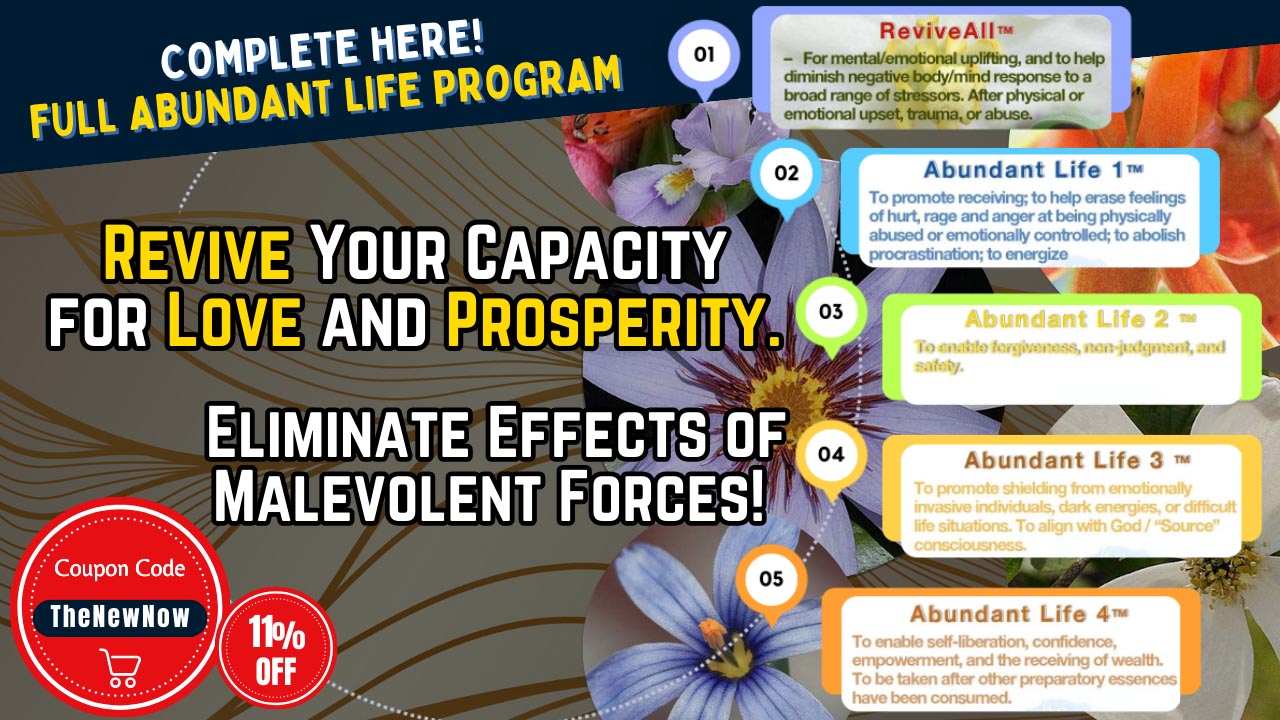Evolution Upside-Down: History is Cyclical, Not Linear
From New Dawn Special Issue Vol 12 No 3 (June 2018)
“…History is cyclical and not, as we are eloquently and assiduously told, linear. We are caught up in the very low ebb, at present. The Iron Age, or the Kali Yuga, as described in traditional Hindu texts. But the tide may come in the future. In the meantime, we are already doing what is best: differentiating ourselves from mainstream thinking”
Get the issue this article appears in
Charles Darwin possessed some characteristics which greatly endear him to me. He was an ‘amateur’, not a professional, making it clear that an all-consuming thirst for knowledge is a mania, not a profession, with its clerical and bureaucratic overtones. And there is something immensely dashing about his voyage on the Beagle. True, he was looking for confirming instances of his pre-established theory; also true, he did seem to neglect whatever evidence he chanced upon that went against it. But the confirmation bias syndrome seems to be embedded in human nature. Objectivity is impossible.
Anyway, when he published his seminal works Origin of Species (1859) and The Descent of Man (1871), he happened to have the right ideas at the right time. It was the age of Positivism, that proud and most legitimate descendant of the Enlightenment. And it was the dawn of the most materialistic and deterministic age in recorded history. Darwin’s theory of biological evolution through natural selection was enthusiastically co-opted by Herbert Spencer and the intelligentsia, and applied to society as a whole. The evolutionary dogma is now taught in every school in the Western world, and found in every textbook, and not just of science, but also of history, civics, etc. The whole ethos of Western societies is imbued with, and hinges on, the materialistic myth of evolution and progress.
The broad concept of ‘evolution’, therefore, has been an invaluable ally to modern societies. Implicitly, but often also explicitly, these maintain that, by finding themselves at the apex of the process of societal evolution, the cosmology they incarnate could not be but the best one. It is a Machiavellianly powerful argument. Why, we were apes; then, humans who could barely, say, light a fire; eventually, we mastered nature (and how!); and now, as exponents of modern democracies in the free, secular and enlightened world, we spread the good news to our fellow humans in less privileged countries, or rather ‘developing’ countries and, surely, by the laws of evolution. (Among many, many ‘anomalies’, Göbekli Tepe, the archaeological site in Anatolia, debunks such a simplistic explanation, but that does not seem to matter to the establishment.) Indeed, such ideas spread like the plague.
As a consequence, a Single Thought is imposed upon the world, along with a Single Behaviour. The same way of reasoning, the same ‘values’, the same way of speaking, dressing, even eating. A completely arbitrary subjective point of view has been disguised as objective and is being imposed on a global scale through cultural lobbies and the mass media. Glory to the intrinsic supremacy of the evolutionary dogma, and its ramifications: liberalism and the free market, the latter being, in effect, the result of merciless natural selection.
Leibnitz, and far more recently Popper, postulated that we live in “the best of possible worlds.” It is the principle of sufficient reason. While Leibnitz argued that God could not have created but the best of possible worlds, one that is constantly undergoing changes for the better, Popper affirmed that contemporary Western societies, and their socioeconomic system, represent the very best system that could possibly be conceived as opposed to previous social and cultural organisations.
Now, dear reader, if you agree with Leibnitz and Popper, read no further. You are a well-adapted human specimen, the result of a pervasive cultural indoctrination, or outright brainwash. A true son/daughter of your times. If you don’t agree, read on – at your own risk.
When I was a teenager, an Italian progressive rock group released an album entitled Darwin. One of its songs encouraged the listener to “think a little differently.” It continued by explaining that nothing had been created by God, but rather all creation had created itself, and then had constantly improved thanks to the laws of evolution. Even spaghetti rock was co-opting its own warped version of Darwinism! Well, I now ask you to “think a little differently.” For you see – I do not believe that man is derived from the ape by evolution, but that the ape is derived by man by involution.
Joseph de Maistre explained that savage peoples are not primitive peoples in the sense of original peoples, but rather the degenerated and/or degenerating remains of ancient peoples that have disappeared. I rebel against the evolutionary dogma and assert that animal species clearly show the degeneration of primordial man’s potential. In a nutshell, the ‘forbidden philosopher’ Julius Evola wrote: “These unfulfilled or deviant potentials manifest themselves as byproducts of the true evolutionary process that man has led since the beginning. For this reason, ontogenesis, the biological history of the individual, does not repeat in any way the process of phylogenesis, the presumed evolutionary history of the species, but passes again through some eliminated possibilities. It stops to roughly outline them and then moves beyond, subordinating these possibilities to the superior and specifically human principle, which is defined and fulfilled little by little in the development of the individual.”
Contrarian enough? It makes wonderful, if non-linear, sense. But the scientist would need proof. (Institutional science, incidentally, does tend to play a fixed game, as it sets up its own rules, and implicitly dismisses anything that does not quite conform with them.) Imagine, for example, a centaur, a four-legged horse body topped by a two-armed human torso with head. This lovely creature, if unearthed somewhere, would bring evolutionary theory to its knees, because there are simply no ancestors from which centaurs might have descended. On the other hand, the esoteric world may well consider us, two-legged humans, the degenerated and maimed mongrels of a centaur.

Artist’s rendition of a Centaur that appears in French poet Maurice de Guérin’s literary work Centaur.
Poets seek truth, not scientists. The French poet Maurice de Guérin in his Centaur has the creature meet Pan, coming down from the mountains to the valley, there to drink from a river. It is night time. The river shimmers, a silver streak under the moon. This is the archaic Pan, a being immediately belonging to the Earth, not at all a god, though later he will be promoted to that rank. And it is Pan that De Guérin’s Centaur sees that night on the opposite side of the river, or… the first man. The Centaur is overwhelmed by disgust. And by sadness. In him, the Centaur sees a maimed individual. That being on the other side of the river announces, furthermore, his own demise, and the end of the Golden Age. Not by chance does the river seem, in the night, a silver streak. The Silver Age has begun.
The world must have been in mourning when man detached himself from this part of his own being. The Golden Age gives way to the Silver Age. The lot will fall to Herodotus, in the fifth century BCE, to transition from the Silver Age to the Bronze Age. He stands at the cusp of the two epochs, and ushers in history. The Renaissance, and later the Enlightenment, will usher in the Iron Age, in which we live at present.
The scientist cannot but reject this. He must. Of course, if palaeontologists or archaeologists did unearth the remnants of a Centaur, it would not only be a fatal blow to evolutionary theory, but to science as a whole. Also, finding true anachronisms would be useful. Such as human beings fossilised inside the stomach of, say, an allosaur; or a trilobite in Cenezoic (‘recent’, up to 65 million years old) strata. But again, science, and Western societies, by and large, tend to dismiss or indeed conceal evidence that may damage the status quo. This censorship is a survival tactic, not in any way shocking or original. But apparently traces of nicotine were recently found inside an ancient Egyptian sarcophagus. Tobacco being a plant of the New World, such a discovery should have changed if nothing else our perception of history. Indeed, it would mean so much more. Not surprisingly, very little has been said or made of this. Why, Atlantean studies, i.e., the entertaining of the possibility that there was an advanced civilisation in prehistoric times, are deeply subversive. They make nonsense of Darwin, Marx, and Freud, and greatly annoy the professorial ‘experts’. They question the Big Bang cosmology. They inspire no belief in progress or social engineering. And ultimately open the door to the “black tide of mud,” as Freud called the occult (really the esoteric) in his famous feud with Jung.
A few years ago, I spent quite a number of afternoons and evenings interviewing the shaman, or rather ‘bundle-carrier’, of the Miccosukee tribe, in the Everglades of South Florida. After a few sessions I realised that the man was able to read my next question as I formulated it in my mind and would answer to it without my asking it orally. As would be expected, I was utterly unable to read his mind, or anybody’s. Eventually, a very odd take on history surfaced from his words.
When the Spaniards kicked out the last Moor, thus achieving their epochal Reconquista after eight centuries of Muslim occupation, that very year, 1492, Columbus officially and ostensibly discovered America (in error?). It is hardly a coincidence. Certainly, metahistory is not taught in any school, so people are at best perplexed by it. That there should be powers involved in epochal changes which go well beyond the pettiness of human greed and social upheavals would seem a self-evident truth, yet contrariwise denied out and out as utterly unthinkable by the heralds of the evolutionary historical dogma. And what did the white men do when they came to America, asked the bundle-carrier?
They found the Golden Age, I realise now, in retrospect. It was not the New World; it was the Old World, older than history, older than myth.
Yes, America was still in a state of grace. Macroscopic cereal only grew here: corn, Zea mays, bearing grains on very large ears which did not require any milling. It was the food of giants, of the Titans. Cacao, Theobroma cacao, the Fruit of Gods, which ‘theo-broma’ means in Greek. The origin of this tropical understory tree were the Amazon Headwaters from where it moved to Central America. Cocoa cultivation began by Mayan tribes in Central America, around 1500 BCE. Mayans and Aztecs attributed divine origin to the cocoa tree, brought to them by god Quetzacoatl. The sacred beverage called ‘chocolatl’ was consumed from golden cups. And the list goes on. Tobacco, i.e., Nicotiana tabacum. An herbaceous plant, tobacco was first used by the peoples of the pre-Columbian Americas. Native Americans cultivated the plant and smoked it in pipes for medicinal and ceremonial purposes. The rustica variety was used by shamans to enter trance states and induce hallucinations. Tomato, Lycopersicon esculentum, was another gift of the Golden Age. A fruit which grew readily not from a tree, and could be cultivated anywhere, provided there be enough warmth. Its edible, fleshy, usually red fruit has become a staple for cuisines the world over. What would Italian cooking be without it? No pizza? No pasta? And what of the following other godly gifts: vanilla; potatoes (which, ironically, made the Industrial Revolution possible); immense herds of bison grazing and roaming freely in the Northern Plains? What of the turkey, which has become such a symbolic animal in the US, and is raised and eaten all over the world? No fowl of this size grew in Europe and, again, with good reason, as Europe had left the Golden Age, then the Silver Age, and indeed was leaving even the Bronze Age.
I have a print by Eanger Irving Couse which I bought in Taos, New Mexico. Painted about a hundred years ago, it depicts a sylvan scene. A native American, wearing only a loin-cloth, and crouching on his knees, is hiding behind a clump of trees, keenly observing, unseen, some turkeys in a clearing, a few paces from him. With his right hand he is clutching what at first sight appears to be a spear. On closer inspection, one realises he is merely holding on to a branchless sapling, which can be mistaken for a spear, but is in fact a slender young tree rooted in the ground. This image, incidentally very well executed, speaks volumes. The native American, slim but evidently not hungry, does not intend to kill the turkeys, but does enjoy observing them.

Photo of the author’s Eanger Irving Couse print.
Such people, primitive, original people, deserved the Golden Age in which they still lived. They had no need for eschatology. Indeed, drawings have been found in caves depicting primitive hunters hunting also in their after-life. There really was no after-life, no demarcation between life here and life elsewhere. The Golden Age was the Garden of Earthly Delights, and gold itself, paradoxically, was not needed.
White man brought along not only a host of exotic diseases, but banking, the greatest disease of them all.
Indeed, the Catholic Church had been banning for centuries the charging of interest, as it perceived it as usury, with banking, and lending, becoming an accepted practice only during the early Renaissance.
“What,” asked my friend, the Miccosukee bundle-carrier, “what did the white men need banking for in America?” As a matter of fact, they owned everything: land, trees, rivers, fish, fowl, game. Everything they saw. Yet, they introduced that supreme artifice – banking.
We know what has happened since to the millions of bison that used to roam the prairies, at the hand of the white man, hunting for sport with lever action rifles. We know what has happened to the native Americans. Yet, we continue to disguise our societies as the logic result of evolution and progress.
Frederic Edwin Church, the painter from the Hudson River School, made it a point to record the last vestiges of the Golden Age in this continent. He spared no effort in reaching the remotest places so as to portray their Golden Grandeur. Far more than Turner or Caspar David Friedrich, respectively from England and Germany; precisely because he roamed the Americas, he had the last chance to sing her Golden glory.
But the evolutionary dogma has branched out and infected also the world of art. It is hard to believe, as art should have been the only field immune to such poison. Yet, we have been told that art, too, evolves. Who could like Giotto now, he who did not know perspective? Clearly, Pier della Francesca and Paolo Uccello, who introduce it, were far superior. But they pale in comparison to the grandeur of Michelangelo and, later, Tiziano. However, Caravaggio, with his shadows and chiaroscuro, is far more evolved. Not to mention Goya. Away at last from those stale religious subjects, into the far better common-life themes. But impressionism fuzzed this up too – a change for the better, of course – and all the other -isms led to the best artistic expression of them all: abstract art, a.k.a. ‘anything-goes-ism’. Indeed, as a further development along the evolutionary scale leading to perfection, ugliness became beautiful, and the beautiful, ugly. Major cities across the Western world number many a museum dedicated to this pinnacle of artistic evolution: ugly art. All along, Theodor W. Adorno and other Marxist philosophers were busy singing the praises of ugliness.
How can we defend ourselves from the aberrations caused by the globalised co-option and imposition of an all-encompassing evolutionary dogma? I think I have given you some hints. History is cyclical and not, as we are eloquently and assiduously told, linear. We are caught up in the very low ebb, at present. The Iron Age, or the Kali Yuga, as described in traditional Hindu texts. But the tide may come in the future. In the meantime, we are already doing what is best: differentiating ourselves from mainstream thinking.
P.S.: My wife and I have quite a collection of abstract painting of which we are very fond; inconsistency is a good sign.
Guido Mina di Sospiro was raised in Milan, Italy. An award-winning novelist and essayist, he has written several books, including The Forbidden Book, coauthored with Joscelyn Godwin. He maintains a blog on Reality Sandwich and for New English Review. He lives with his wife between the Washington, DC, area and central Italy.
Guido Mina di Sospiro’s Forbidden Fruits: An Occult Novel, co-authored by Joscelyn Godwin, is available from all good bookstores.
© New Dawn Magazine and the respective author.
For our reproduction notice, click here.
© NEW GNOSIS COMMUNICATIONS INT. PTY LTD



 www.newdawnmagazine.com
www.newdawnmagazine.com


















I really enjoy the information provided, thanks